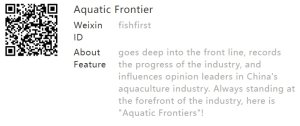 This piece was published in the November 2021 edition of FishFirst (China)
This piece was published in the November 2021 edition of FishFirst (China)
Author: Brett Glencross, IFFO Technical Director
Most feed formulation is undertaken using modern linear-least cost formulation software that makes the process relatively simple. However, one aspect of formulation that is often overlooked is the application of shadow costing. Shadow costing is the capacity to use the formulation process to investigate how much of any ingredient we would use if the price changed, or what prices ingredients would be worth if their composition changed.
The beauty of the shadow-costing function in linear-least cost formulating is that it helps us understand the important drivers of our formulations in so much as it identifies those critical sensitivities of each formulation. Similarly, this process can be used to analyse formulations to define what those sensitivities are for any given diet and what any specific nutrient is worth. However, the process is very formulation specific and influenced by lots of factors, like the prices of competing ingredients and so on, but it does serve as a useful tool in understanding value-drivers of ingredients in each scenerio. Let’s consider for example a diet for shrimp and the role of three nutrients – protein, amino acids, and omega-3.
To examine this concept, we first need to define the terms-of-reference in which we are working. Let’s assume we are using a diet that is 40% protein, 8% lipid and 0.5% omega-3, arguably a typical Asian shrimp diet specification. We must also assume that the diet is balanced for all the other essential nutrients as well, and for that I will base this example on the specifications defined in the NRC (2011) handbook on requirements for fish and shrimp.
Protein is important in this story as it is arguably to most critical nutrient in shrimp diets. Not only is it essential for supply of dietary amino acids, but it also regulates appetite in shrimp. In this scenario, if we take a single protein source, for example fishmeal, and change its protein level from 60% to 65% to 70% (Figure 1a), we can see that the slope of the line driving the shadow-cost in that fishmeal gives us the value of a unit of protein in this resource. In this example, the protein is worth negative USD$2.16 for every percent increase in the fishmeal. While this might sound counter logical, this trade-off occurs because of the cheap supply of bulk protein available from many plant protein resources. When we take this approach, we find that not only is the protein level of an ingredient important, but so too is its amino acid profile.
Indeed, this is a key point where we can see differences in value between ingredients like corn gluten and fishmeal, in that fishmeal has an ideal amino acid profile and corn gluten does not. Despite the similarities in protein levels between these two ingredients, this difference in amino acid profile critically affects it value (Figure 1b). In this example, we can calculate that the difference in the level of the amino acid lysine in fishmeal is worth USD$31 for every percent increase.
The other nutrient that is particularly sensitive to this process in aquaculture formulations is the omega-3 content of an ingredient. If we change to levels of omega-3 in a standard fishmeal from 1% to 2%, we can calculate based on the slope of the shadow-costed values against the change, that the difference in omega-3 levels are worth USD$54 for every percent increase in omega-3 in the fishmeal.
As we can see from these few examples, putting a value on different ingredients and nutrients is a powerful tool to assist not only the formulation process, but this also assists the purchasing process by setting boundaries as to what is good value and what is not. However, just as we begin to think we have this process largely sorted out new parameters are now emerging that also contribute to this process. With the growth in the green-tech sector and the establishment of initiatives like the Global Feed Lifecycle Inventory (GFLI), the inclusion of environmental-footprint parameters and the ability to formulate to these is now becoming a reality. With the ability to include something like carbon-footprint as a formulation parameter, it also means we can monetise that parameter and the shadow-costing analysis can tell us exactly what that is worth in any given formulation. So, in the not-too-distant future we will be valuing our ingredients not just on their nutrient composition, but also on their environmental credentials.

Figure 1a,b,c. Changing the compositional parameters of your ingredients in a shadow costing approach is a useful way to identify those nutrients that REALLY drive the value of your formulations. In this example we can see the impact of changing crude protein (a), lysine (b) and omega-3 (c) level of a fishmeal on a shrimp diet formulation.








